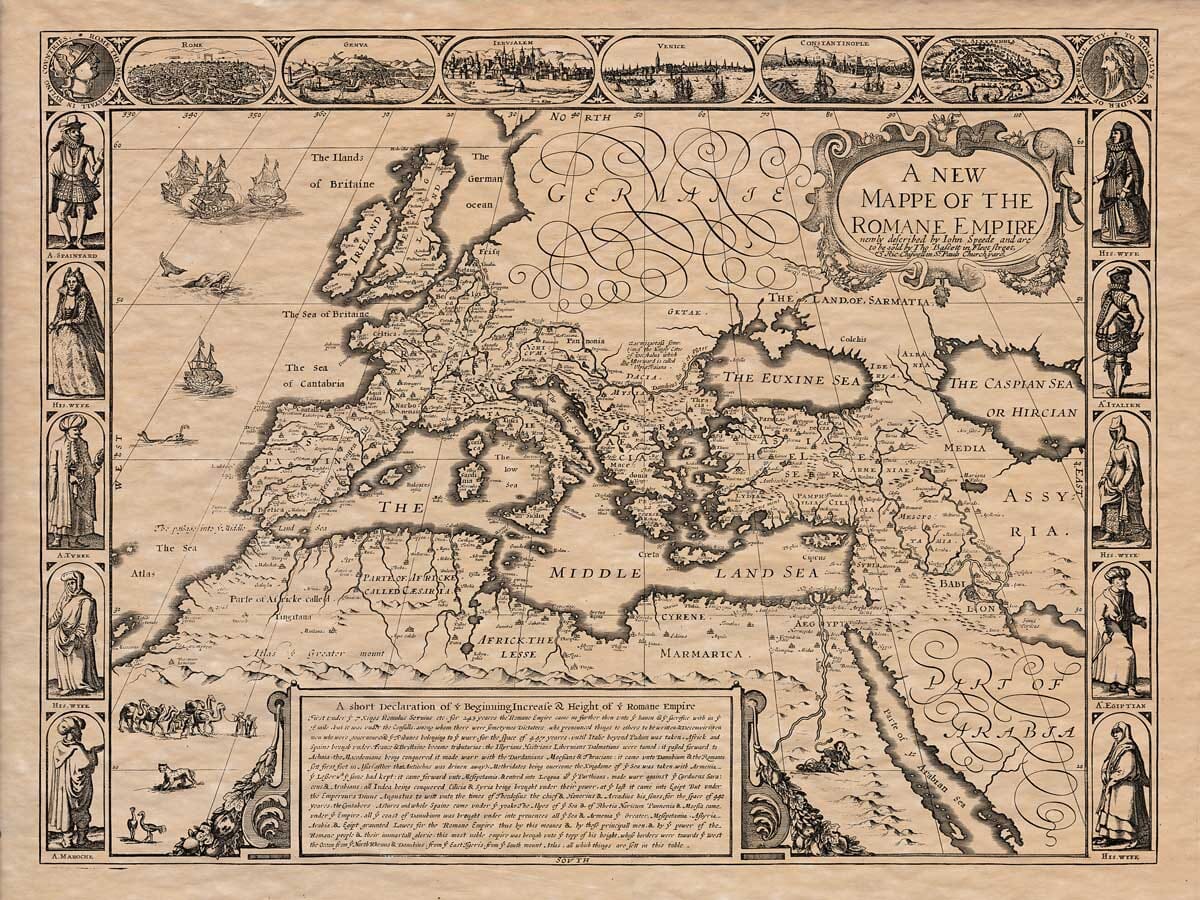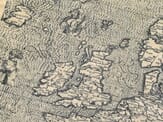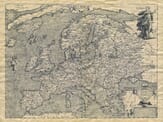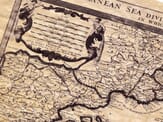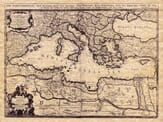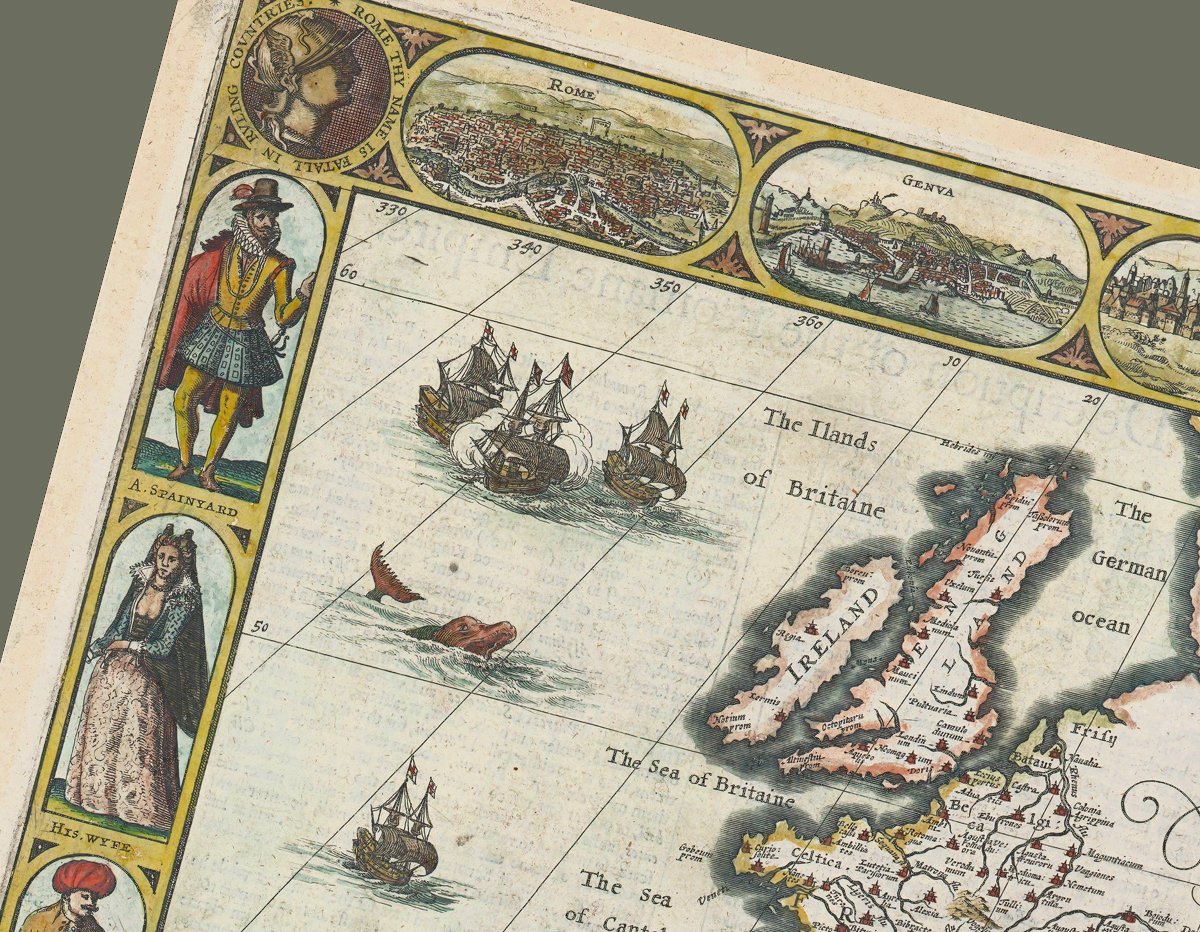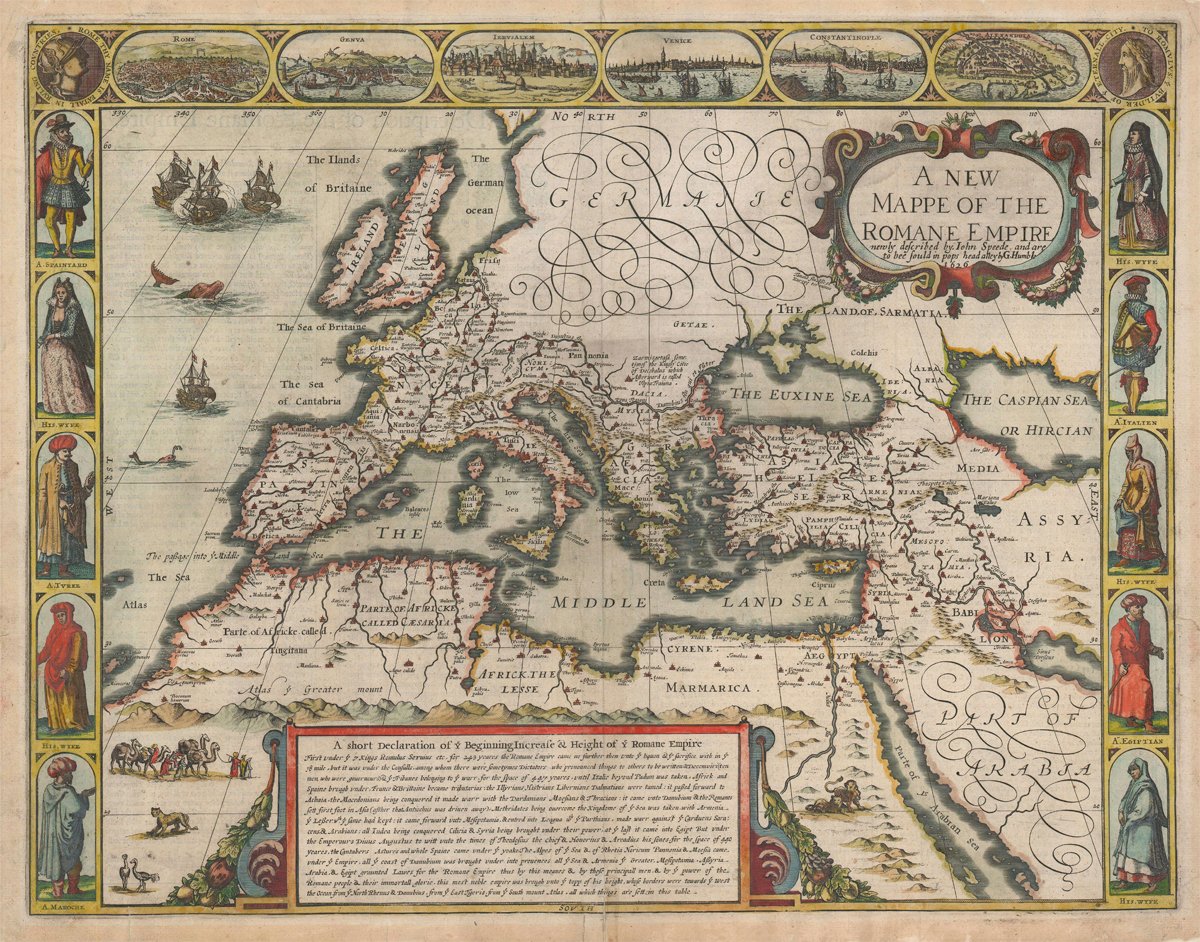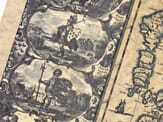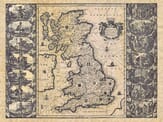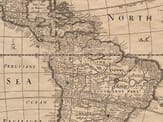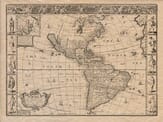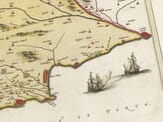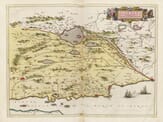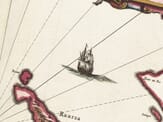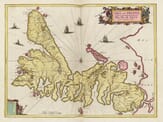Description
John Speed noted on the verso of his old map of the Roman Empire (translated to modern English) . . .
The Description of the Roman Empire
In the words of many historians, the Roman Empire arose from the humblest of origins to become a force the world would long admire. It is nearly impossible to explain how a people, born in obscurity, managed in so short a time to rise from meagre beginnings to such towering greatness — a state that ultimately ruled vast lands and shaped the course of history.
Look back to Romulus, the founder of Rome, and you will see nothing noble in his origin. His father, some claim, was Mars, the god of war. His mother, a Vestal Virgin, was condemned for breaking her vows. The tale of his birth is half-myth, half-tragedy: cast out with his twin brother Remus, left to die by the river, they were nursed by a she-wolf and later raised by a humble shepherd.
Little hope seemed to remain for such a forsaken pair. But fate had plans. The twins grew strong, discovered their noble origins, avenged their mother’s dishonour by overthrowing their treacherous uncle, and reclaimed their kingdom. Romulus, scorning his brother’s competing ambitions, ultimately founded Rome and gave it his name.
He became Rome’s first king, ruling over a ragtag group of exiles and shepherds. These early Romans were so shunned by neighbouring peoples that no woman would marry them. Facing extinction, Romulus devised a bold and brutal solution: he invited neighbouring tribes to a festival and, during the celebrations, the Romans seized the women by force — the infamous Rape of the Sabines.
Though born of violence, this act secured wives for Rome’s men and united the new city through blood and necessity. Wars followed, but the fledgling city, through courage and resilience, defeated its enemies and gained peace.
At this time, Rome was but two miles across, its people huddled within modest boundaries. Yet Romulus had built a refuge, a sanctuary where debtors, slaves, and criminals could find protection. He welcomed all comers — Trojans, Arcadians, and others — creating a melting pot of exiles and outcasts.
Though this policy built numbers, it also brought disorder. So Romulus instituted laws, established a senate, and called together 100 of the wealthiest and wisest to aid in governance. These were the Patres, or senators — forefathers of Roman law and order.
Romulus mysteriously vanished during a public assembly. Some claimed he was taken by the gods; others whispered that jealous senators murdered him. Whatever the truth, he was later deified and worshipped as Quirinus.
Rome’s second king, Numa Pompilius, brought peace and piety. He established religious rites, appointed priests and augurs, and entrusted the Vestal Virgins with guarding Rome’s sacred flame. Under him, Romans became not just warriors, but civilized citizens, respectful of law, gods, and each other.
The third king, Tullus Hostilius, reignited Rome’s martial spirit, waging war with neighbouring states. One of Rome’s most famous victories came through a duel between three Roman brothers, the Horatii, and three Alban champions, the Curiatii. The lone surviving Roman defeated all three opponents, securing victory for Rome.
The fourth king, Ancus Marcius, expanded the city’s walls, built the first bridge over the Tiber, and laid foundations for future greatness.
Then came Tarquinius Priscus, a man of Greek lineage and cunning wisdom. He introduced the triumphal chariot, established state symbols of honor, and strengthened Rome’s institutions.
Following him, Servius Tullius rose to power. He was beloved but eventually assassinated by his own daughter and her husband, Tarquinius Superbus, the seventh and last king of Rome. This final king ruled with cruelty and pride, until the rape of Lucretia — a noblewoman — by his son incited the people to revolt.
With his overthrow, monarchy in Rome ended, and the Republic was born.
From this point, Rome’s governance passed into the hands of elected Consuls, each serving one-year terms. Over time, they created Tribunes, Dictators in times of emergency, and Censors to manage moral conduct and public finances. The Twelve Tables codified Roman law, inspired by the Greeks and written by ten appointed lawmakers.
The Republic expanded rapidly. Rome fought and conquered the Latins, the Etruscans, and eventually all of Italy. They then turned outward, defeating Carthage in the Punic Wars, subduing Greece, Asia Minor, Gaul, and even far-off Britain.
At its height, the Roman Empire was bounded by:
-
The Atlantic Ocean in the West,
-
The Tigris River in the East,
-
The Danube and Rhine in the North,
-
And the sands of the Sahara in the South.
The world lay under Roman rule. Provinces such as Spain, Gaul, North Africa, Egypt, Syria, and Judea became parts of this grand empire. Cities were connected by roads, armies ensured peace, and Roman law unified all.
In time, however, the Republic gave way to Empire. Julius Caesar, after consolidating power, was assassinated in the Senate. His heir, Octavian — later Augustus — became the first Emperor. Rome now had a single ruler, worshipped like a god, bearing titles like Imperator, Augustus, and Princeps.
Under the Caesars, Rome reached its pinnacle — vast, wealthy, and unmatched. The city itself boasted:
-
Seven legendary hills,
-
Massive temples,
-
The Colosseum,
-
Public baths, forums, and theatres.
Poets claimed that Nature had exhausted herself creating Rome.
But greatness is rarely eternal. With division came decline. The Empire split into East and West. The West, weakened by internal decay and barbarian invasions — Goths, Vandals, Huns — fell into ruin. Rome herself was sacked.
The Eastern Roman Empire, later called Byzantium, survived for nearly a thousand more years, centred in Constantinople.
The old title of Roman Emperor lingered in name only, passed among Christian princes in the Holy Roman Empire, elected by seven Electors — three ecclesiastical, four temporal.
As for Rome today, she no longer commands the world, but her legacy lives on — in law, language, government, and spirit. This was the rise, glory, and fall of the ancient Roman Empire.

